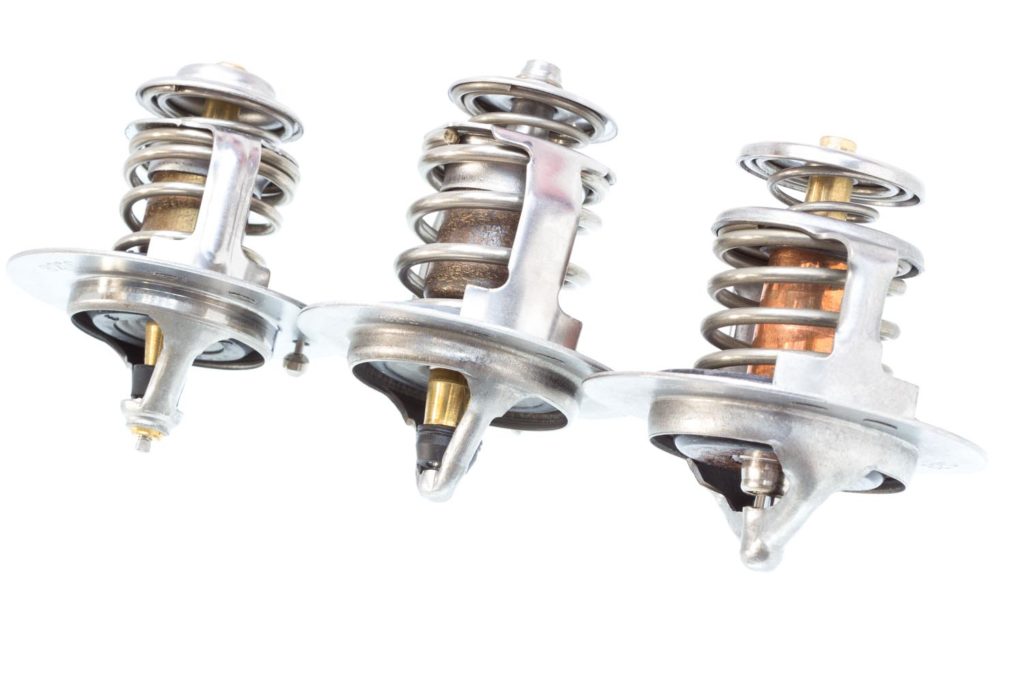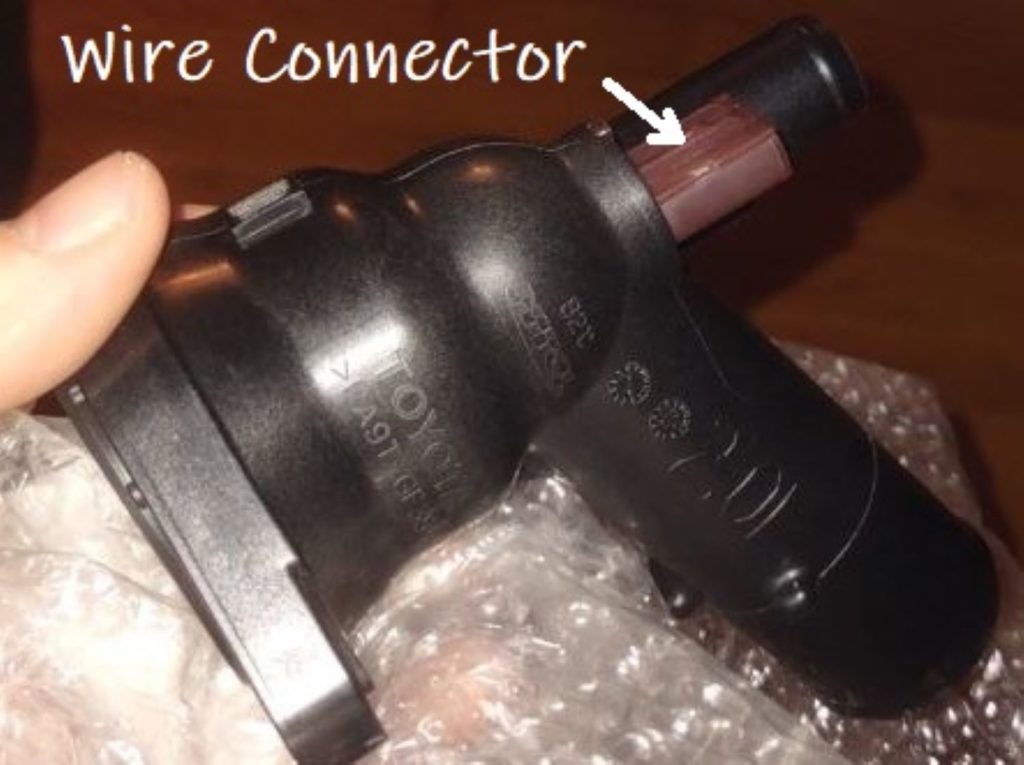A healthy engine should run above 200 degrees. The radiator cooling fan on some vehicles doesn’t even engage until after the coolant reaches nearly 230 degrees. Although most modern engines are expected to run 200-230°F, most thermostats open at just under 200°F.
Disregarding a bad thermostat may result in catastrophic engine failure, so you must replace it as soon as it begins to show signs of trouble. Fortunately, you can determine when it’s time to get a replacement by watching for signs of a bad thermostat.
What Does a Thermostat Do for Your Car?
The thermostat is a valve that regulates coolant temperature and helps it stay at a certain preset level for optimal engine operation. It is located between the engine and the radiator.
Although a stuck closed thermostat can cause overheating, modern thermostats more often fail by opening too soon or sticking open, which generally causes the engine to run too cool.
But other than the obvious impact a cold running engine can have on emissions and fuel economy, an engine that runs too cold for too long can begin to develop crankcase sludge even if the oil is changed regularly.

How Does a Thermostat Work?
You may be wondering, “What does a car thermostat even do?” Most thermostats have a wax-filled brass tube that expands as the coolant gets hot, opening the thermostat’s valve against spring pressure. A thermostat’s temperature rating represents the point at which the thermostat starts to open.
While the thermostat is closed, the coolant is pumped through the heater core or through a heater core bypass valve that only opens when cabin heat is requested.
When coolant temperature expands the wax pellet to open the valve, the coolant flows through the radiator to carry engine heat away so that the coolant returning to the engine is cool, and the thermostat closes again until the coolant gets hot enough to open it again. You can actually watch this thermostat cycling happen if you graph the engine coolant temperature sensor on an idling engine.


The temperature at which the valve begins to open depends on the vehicle. Most late model thermostats open once the engine reaches 195 to 200 F. Once the engine shuts off and cools down, the wax contracts and closes the thermostat.
What Are the Possible Signs of a Bad Thermostat?
When your vehicle’s engine temperatures are reaching abnormal ranges, you can look out for a number of symptoms of a stuck open or closed thermostat. Here’s how to know your thermostat is bad:
Engine Running Too Cool or Too Hot
You may be dealing with a faulty thermostat if your vehicle’s temperature gauge reading is high into the red mark or running at the bottom end of the normal range. An engine that is running too cool will store a P0125 or a P0128 code.
This could mean that the thermostat is stuck closed if the engine is running too hot or opening too soon if the engine is running too cold. And while an overheating engine may also be caused by other parts, such as a busted or clogged radiator, a defective cooling fan, or a weak water pump, a thermostat is usually a good cheap first step, unless it’s extremely difficult to access (and on some engines that’s the case). To be sure, it’s best to have your vehicle checked by a certified mechanic for a proper diagnosis.

Effects of a Bad Thermostat
A thermostat can fail in either the open or closed position. When the thermostat stays closed, the engine will begin to overheat, potentially leading to extensive engine and cooling system damage. Because of this, we don’t recommend driving with your thermostat stuck closed.
On the other hand, if the thermostat is stuck open, the engine will fail to reach operating temperature, resulting in issues, such as an inoperative cabin heater, increased fuel consumption, and possible engine wear.
How to Diagnose a Faulty Thermostat
To check if your vehicle has a defective thermostat that is stuck closed, feel the upper radiator hose after the engine has had time to warm up. A cool radiator hose usually means the thermostat is stuck closed, restricting coolant from flowing from the engine to the radiator.
Note that a cool radiator hose could also mean that the engine has a low coolant level, trapped air bubbles under the thermostat, or a bad water pump. One test often performed is to remove the thermostat from the engine and drop it into a bucket of boiling water (over 200 degrees). The thermostat should open while it’s submerged close once it’s pulled out. If it fails this test, the thermostat is defective and should be replaced immediately.
That being said, sometimes a thermostat will pass this test and still be defective, so this isn’t a go-no-go in every case. It’s best to go ahead and replace the thermostat unless it’s configured differently. Some thermostats are built into the housing (like on a mid-2000s Chevy Trailblazer) and those are a bit more difficult to test definitively.
If the thermostat is stuck open, the heater might not produce enough warmth during cold weather and the engine may take more time to reach its normal operating temperature. These issues are usually caused by a defective wax element or broken return spring.
Why Should You Replace a Bad Thermostat?
Aside from maintaining the engine’s optimal performance, getting a new thermostat reduces the risk of overheating and thermostat failure. Experts recommend changing the thermostat every ten years for preventive maintenance, especially on early-model and high-mileage vehicles.
Can You Drive Without a Thermostat?
It is not advisable to run your engine without a thermostat. While driving without a thermostat almost never causes overheating, it does increase the risk of sludge formation due to the engine running too cold, and sludge in the oil pan can starve the engine for oil.
Replacing a Bad Thermostat
A new thermostat can cost anywhere between $10 and $600 (for just the part), depending on your vehicle’s year, make and model. Other factors that may affect the price include the thermostat’s open temperature rating, material, and brand. To make sure you’re getting the right thermostat for your vehicle, select a product that’s designed to fit your application. You’ll also want to select a thermostat that’s designed to open at the same temperature as your original thermostat.
Replacing a bad thermostat is considered a DIY-friendly repair job on most vehicles, as it only involves a few tools, and the procedure is pretty straightforward. However, if you’re not confident with your DIY skills or you don’t know how to properly fill the engine with coolant (which can be more complicated than it would seem), it may be best to have a professional do it.
Any information provided on this Website is for informational purposes only and is not intended to replace consultation with a professional mechanic. The accuracy and timeliness of the information may change from the time of publication.































